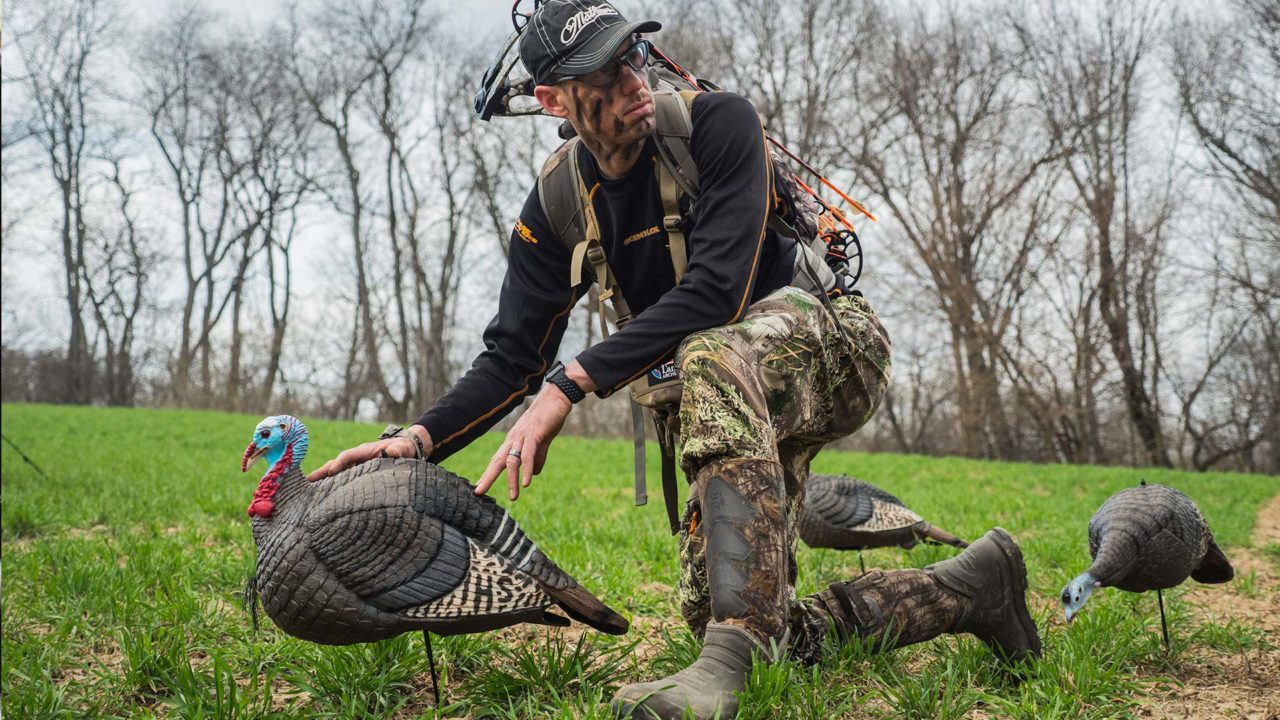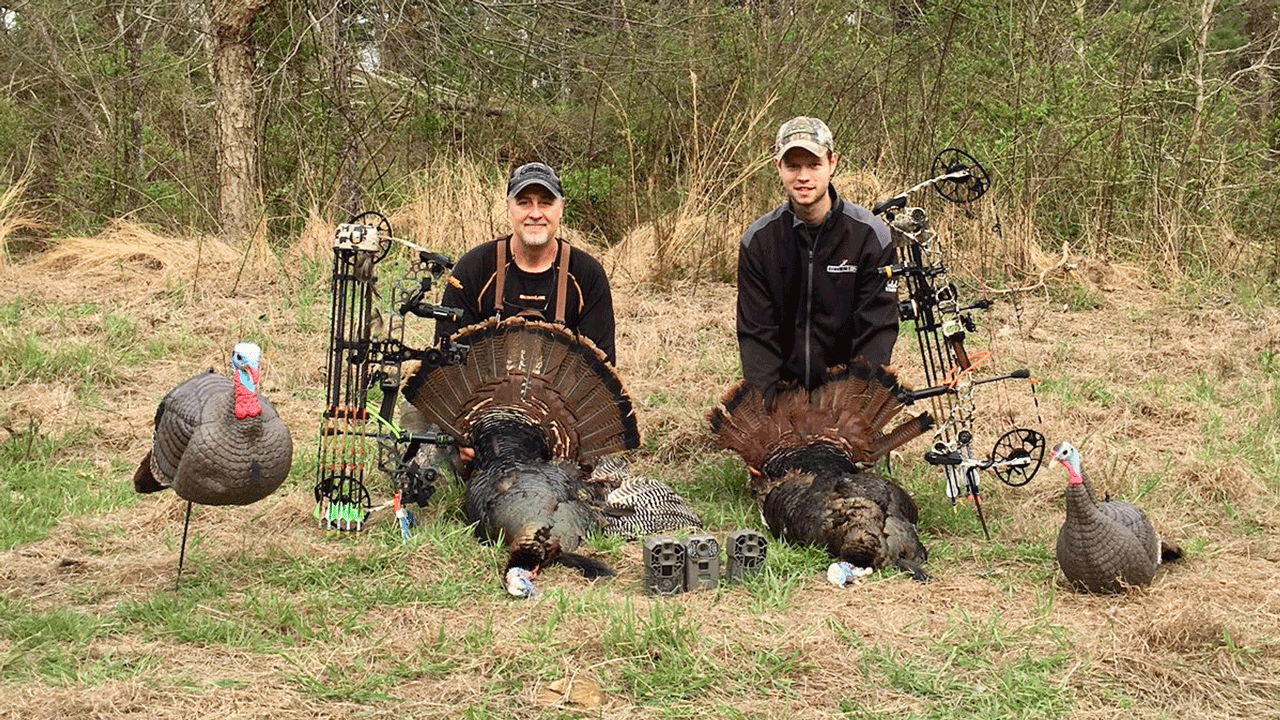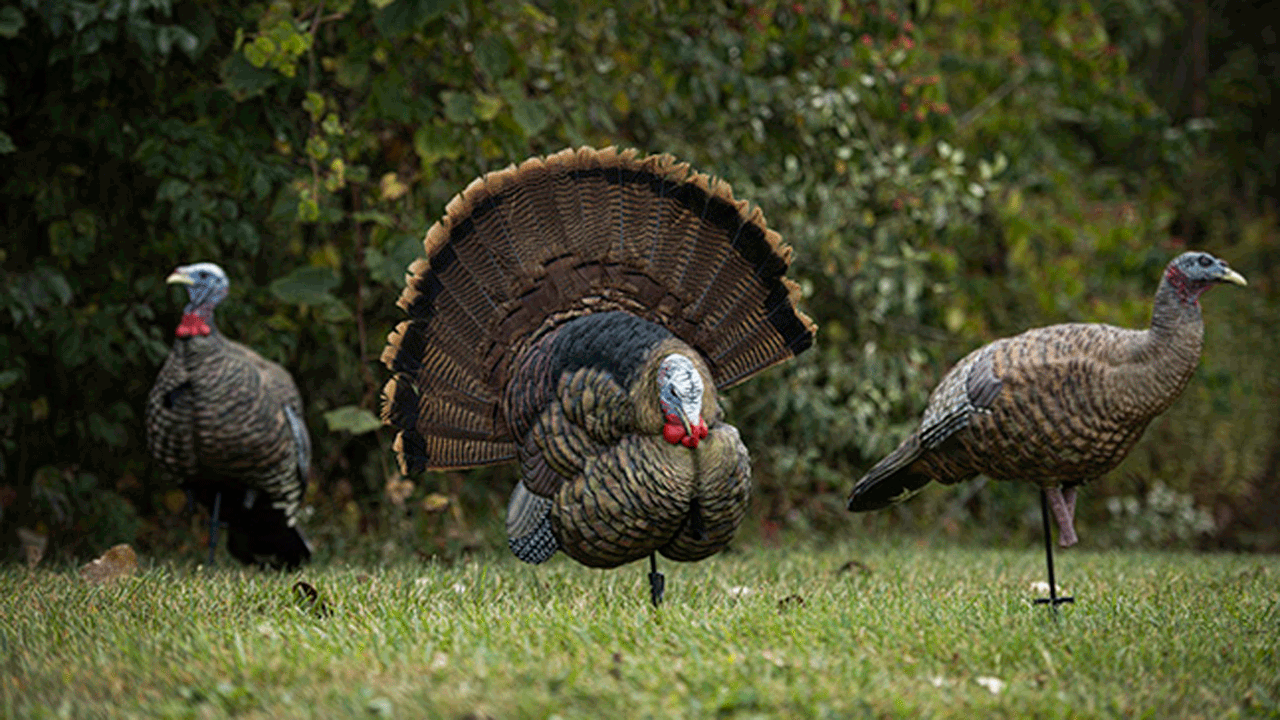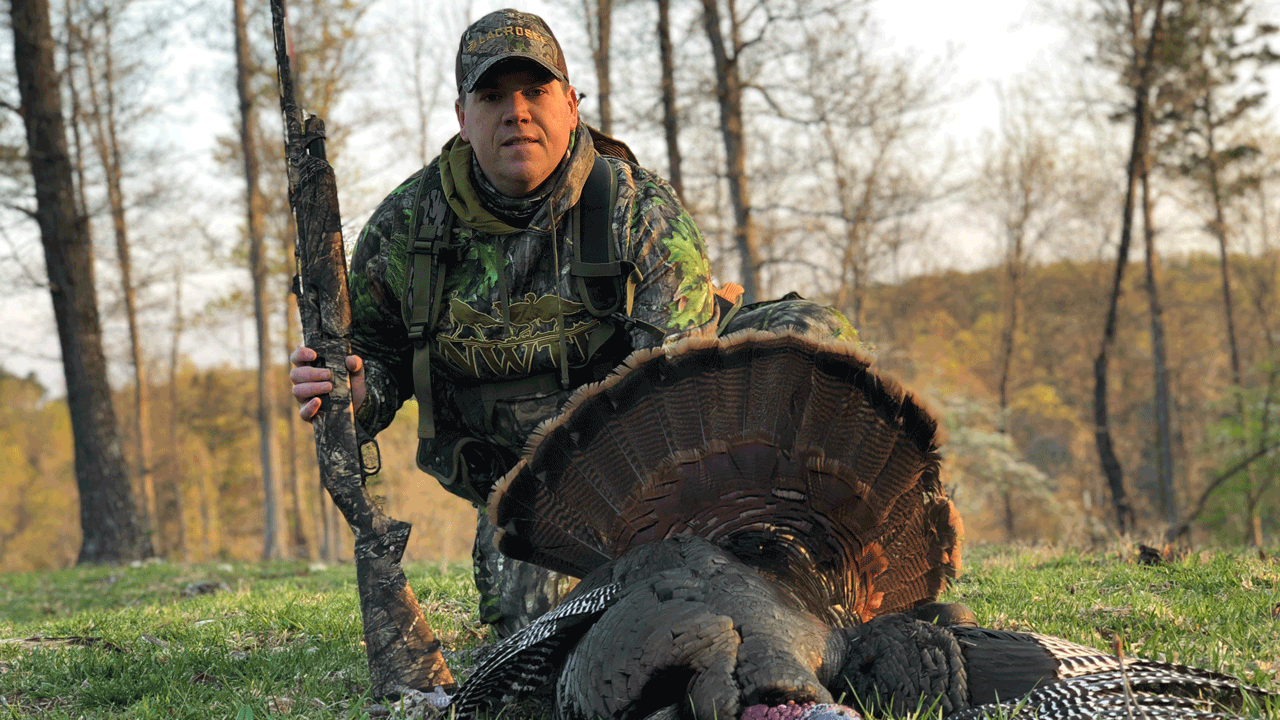With the modern technology of today’s turkey decoy, a hunter has access to the most life-like turkey decoys ever manufactured. Realistic details that are used in the feathers and posture add up to a genuine looking turkey. Yet, even with this technology there are still hunters that choose not to use decoys. Most hunters that stray away from the use of decoys have been burned when using them. Stories of turkeys hanging up out of range or spooking gobblers enough that they take off the other way are often the reasoning behind the bad taste that turkey decoys have left in these hunters’ mouths. Often, these bad experiences could have been prevented if one would simply take a few steps back and pay attention to the details that can make or break a perfect decoy setup. When decoys are used properly, the chances of fooling even the weariest of toms can increase dramatically.

Best Decoy Setups for Turkey Hunting – Creating Attention
The main reason that hunters use decoys is that of pulling the attention off the hunter while still luring an animal in to a specific location, the keyword being “attention.” In order to fool some of the toughest toms to coming to a decoy, one must create attention. The best way to do this is by taking notice of the timing of the hunt. For example, using turkey decoys in the early part of the season. During this time, the pecking order of gobblers is still lingering in the air, meaning the fight for dominance is still in effect. It makes this the time that a hen and a jake decoy work the best. When a mature gobbler, maybe even the dominant bird, witnesses an immature jake trying to tend a hen, the fight is on. This decoy placement tactic is sure to make the mature gobbler come to the decoys, ready to fight.
As for creating more attention, I will typically use a breeding set up. Normally, I will use a half strut jake with a standing hen decoy. I will also pair a 1/4 strut jake decoy with a breeding hen decoy, laying directly on the ground close to the jake. This resembles the hen preparing to be bred by the jake. Again, this creates the urgency for a mature gobbler to come in quickly, ready to beat the jake into the ground for trying to steal his girl. Another attention grabber is that of using more decoys. This technique is not used to attract a fight, instead it is used to grab the attention of a gobbler that is at a long distance. This decoy placement is especially effective when hunting open fields. I like using the same jake and standing hen, along with a feeding hen placed 10 or 15 steps away from the other two. This gives more of a visual from a long distance due to the decoys creating the image that there are several turkeys together. The other reason for the feeding hen is to create an assurance that everything is safe in the area because the hen feeding. This tactic works well, especially on a wary tom. This placement signals that everything is safe, creating a false sense of security, allowing him to feel at ease to check things out.

The last setup for catching the attention of the elusive tom is using a full strut gobbler along with a couple of hens. I am not a big fan of using full strut gobblers, however, I think they do have their benefits in specific situations. One situation being when hunting open fields where a lot of turkeys hang out. This is especially true in some of the western states in which I have hunted, such as western Oklahoma, where it is not uncommon to see 50 to 60 turkeys in the same field at one time. This is a scenario that I think one needs a decoy set up that can be seen from a distance, as well as looks intriguing to other gobblers in the field. The other situation where a full strut gobbler is needed is when the situation is right for reaping. Reaping is when the hunter hides behind the decoy while carrying it to a gobbler. Again, I think it must be the perfect scenario in order to perform this, which would be in an open field on private land. Obviously, safety is the number one factor when reaping.
During the later parts of the season, things have started to calm down in the turkey woods, and so should one’s decoy setups. During this time of the season, turkeys become pressured from hunting, hens begin going to the nest during the mid-mornings, and fighting for dominance has slowed down among the gobblers. It almost seems like the adrenaline rush among turkeys dies down during the latter part of the season. It’s a good time to tone down our decoy sets. During the later part of the season, I like using a hen by herself. This simulates a hen who hasn’t been bred yet and is out roaming around for a tom. By this part of the season, gobblers seem to steer away from the challenge of a fight, compared to the early part of the season. They have been whipped themselves and they are becoming a little more fatigued during this time. Calm down the situation with one hen decoy and still create the attention that is needed.

Once it has been decided as to what types of decoys to use, the next question is how far they should be placed from the hunter. This can be decided by knowing if you will be hunting with a shotgun or with a bow. When hunting with a shotgun, I place my decoys at approximately 20 yards. I place my decoys in a realistic situation with one thing in mind – that being keeping the gobbler’s attention away from me.
As for the bowhunter, the decoy setup is completely different. No matter if hunting out of a ground blind, or directly off the ground, when bowhunting I will place decoys no more than 10 yards away. In the most ideal situation, I want a gobbler within 35 yards when using a bow. Instead of thinking about keeping the attention off me as with when using a shotgun, I now want to draw a gobbler as close as possible. Placing the decoys close ensures the bird is tighter to my setup, even if he hangs up.

Best Decoy Setups for Turkey Hunting – Conclusion
The use of turkey decoys is one of the biggest tools available when drawing a gobbler to a desired area. With today’s realism in these decoys, a hunter can not only fool a tom into thinking that the calling that he has been hearing is what he is seeing with his own eyes. If used properly, no matter if hunting with a shotgun or a bow, the use of decoys can steer a gobbler into a free ride over the hunter’s shoulder at the end of the hunt.
Visit our friends at HS Strut for a variety of turkey decoy options for you next hunt.